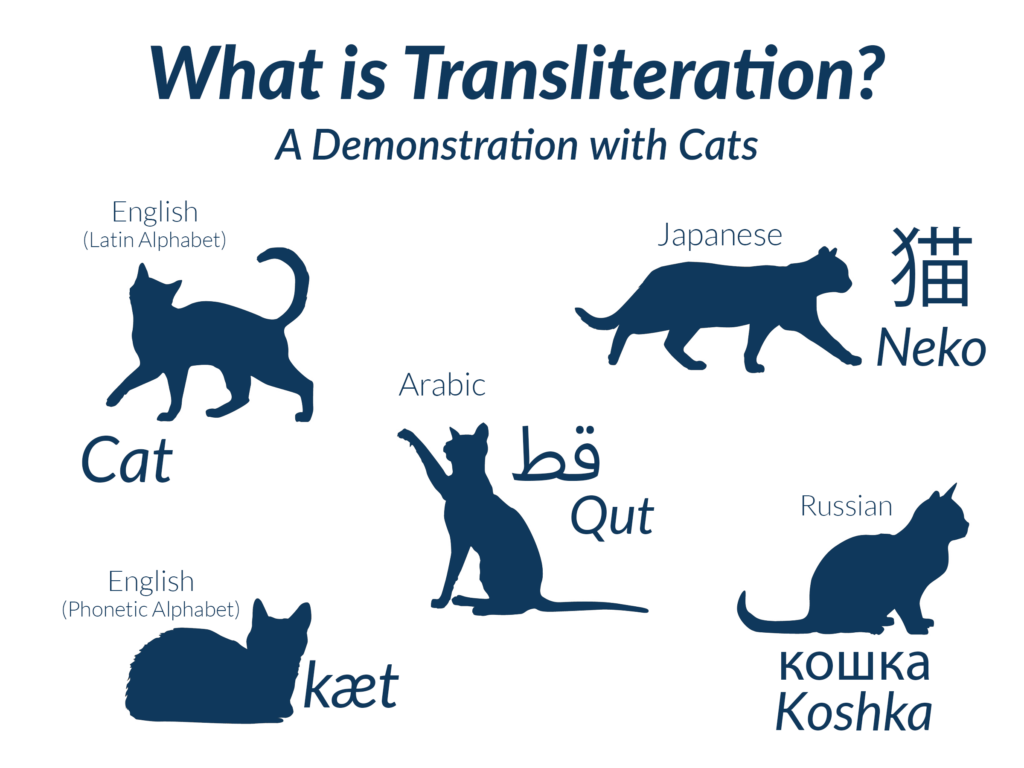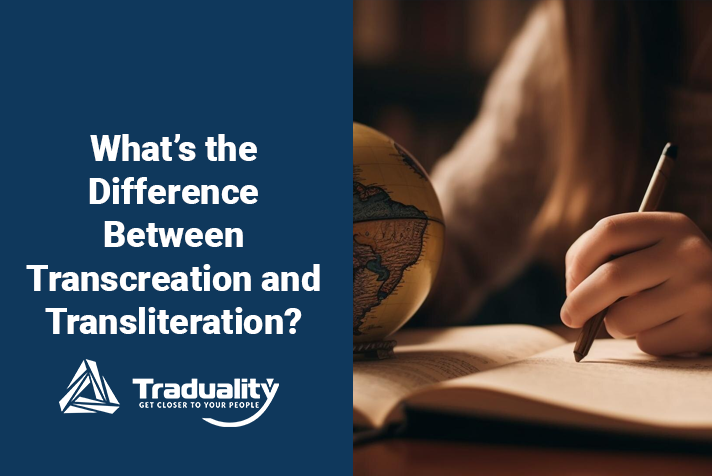In the world of translation, there are many ways to translate content from one language to another. Aside from translation and localization, transcreation and transliteration also play a significant role in the industry. While transcreation and transliteration sound very similar, the two are different processes. Sometimes, they’re used in tandem, but it’s important to fully understand their differences when working on translation projects.
What is Transcreation?
To start, understanding transcreation and how it relates to translation is essential. Transcreation is primarily used for creative projects, like projects in need of literary translation or marketing translation projects.
The Difference Between Transcreation and Translation
Transcreation is the process of adapting a work into another language to better suit the target audience. Like translation, transcreation aims to stay faithful to the source material, but transcreators take far more creative liberties when working on a transcreation project. This is because transcreation is mainly used for creative works.
A transcreator’s goal is to convey the source material’s tone and emotional intent as accurately to the audience as possible. Translation doesn’t always convey these emotions: words and phrases can get mixed up between languages, and some cultural mannerisms don’t transfer as smoothly into other cultures. Transcreation remedies these gaps in cultural understanding.
Transcreation Examples
Transcreation is everywhere: in global ad campaigns, in movies, TV, video games, and in books. All of these mediums rely heavily on emotions to convey purpose. Without transcreation, some concepts may get lost in translation.
Games like Pokémon use transcreation for nearly everything, from character names to locations and dialogue. In contrast, foreign television shows like Squid Game use transcreation more subtly to fix dialogue that would otherwise sound unnatural to other audiences. For more examples of transcreation in action, check out our article: Transcreation vs. Localization: What’s the Difference?
What is Transliteration?
Transliteration also plays a major role in the translation industry and is often used with transcreation and localization. Transliteration is a particular type of translation that doesn’t replace one word for its counterpart in another language—instead, it translates words from one writing system to another.

The Difference Between Translation and Transliteration
Unlike translation, transliteration doesn’t replace one word for its target-language counterpart. Instead, transliteration rewrites the term in the target language’s associated writing system. While many Western languages use the Latin alphabet, other languages worldwide use other writing systems. Languages like Russian, Arabic, Japanese, and Vietnamese all use vastly different writing systems with different symbols associated with different sounds. Transliteration aims to make up for the differences in writing systems.
Transliteration Examples
Although most people aren’t as familiar with transliteration as with translation and localization, it’s still everywhere in our globalized world.
For example, if you’ve ever eaten at a Korean restaurant in the United States or the UK, you’ve experienced transcreation firsthand: common menu items like kimchi and jjajangmyeon are presented in Latin script for English-speaking diners.
In foreign television shows and movies—especially anime—character names and place names are also often transliterated to maintain consistency throughout the different translations of the work.
Why do People use Transliteration?
Transliteration is mainly used for proper nouns, names of food items, or culturally specific concepts. This is to maintain consistency between different translation projects. However, the primary purpose of transliteration is to teach non-native speakers the correct pronunciation of foreign words and to convert languages from one script to another to assist and educate readers in learning the language.
How do You Transliterate a Word?
To transliterate words, linguists need expertise in phonetics associated with both languages and scripts they’re transliterating in. During the transliteration process, the linguist breaks down the word into its base syllables and sounds and then recreates those sounds using words in the target language.
What are the Two Types of Transliteration?
Overall, there are two types of translation: phonetic and orthographic.
- Phonetic transliteration focuses on transliterating individual sounds as accurately as possible. The process ensures readers know how to pronounce a word in their native writing system. Phonetic transliteration is the most common of the two types.
- Orthographic transliteration emphasizes the look and feel of a word. Unlike phonetic transliteration, orthographic transliteration projects aim to keep spellings as similar to the original script as possible.
Transliteration vs. Phonetic Spellings
If you’ve ever read a dictionary and seen the strange typeface underneath the word you’re looking up, you’ve encountered a phonetic spelling. The International Phonetic Alphabet (IPA) is a writing system linguists use to catalog the pronunciation of words, regardless of their language. Each symbol in the IPA is associated with a particular sound. Like traditional writing systems, linguists can use the IPA to transliterate between languages, but the IPA isn’t used as a writing system aside from teaching phonics.
What is the Difference Between Transcreation and Transliteration?
So, what are the differences between transcreation and transliteration? There are three main ones:
- Purpose: the purpose of transcreation is to retain the source material’s emotional impact, while the purpose of transliteration is to write out words in a different script to aid readers with pronunciation.
- Use: Transcreation is mainly used in creative spaces, while transliteration is common everywhere.
- Application: Transcreation is applied to advertising and creative projects, where audience emotion is paramount. Transliteration only applies when translators want to preserve a particular word in the source language (like names).
What is the Difference Between Transcreation and Transliteration Rates?
Now it’s time to talk prices: what’s the difference between transcreation and transliteration rates?
Generally speaking, transcreation is the costliest of any translation service because it comprises three elements: linguistic translation, cultural adaptation, and re-creation. These three steps take a significant amount of time, and the transcreator must take creative liberties with the work to ensure the source work’s emotional impact remains the same. Transliteration, on the other hand, takes less time and often only applies to a few words within the source material. Transliterators don’t have to change entire sentences or worry about taking creative liberties when working on the target language. They mainly have to focus on phonetic similarity.
Ready to Get Started?
Do you have a transcreation project in the works? Traduality has everything you need to succeed; create your first project today and find vetted translators, or book a meeting with us to learn more about your specific needs.
Updated 2/21/2024.





0 Comments